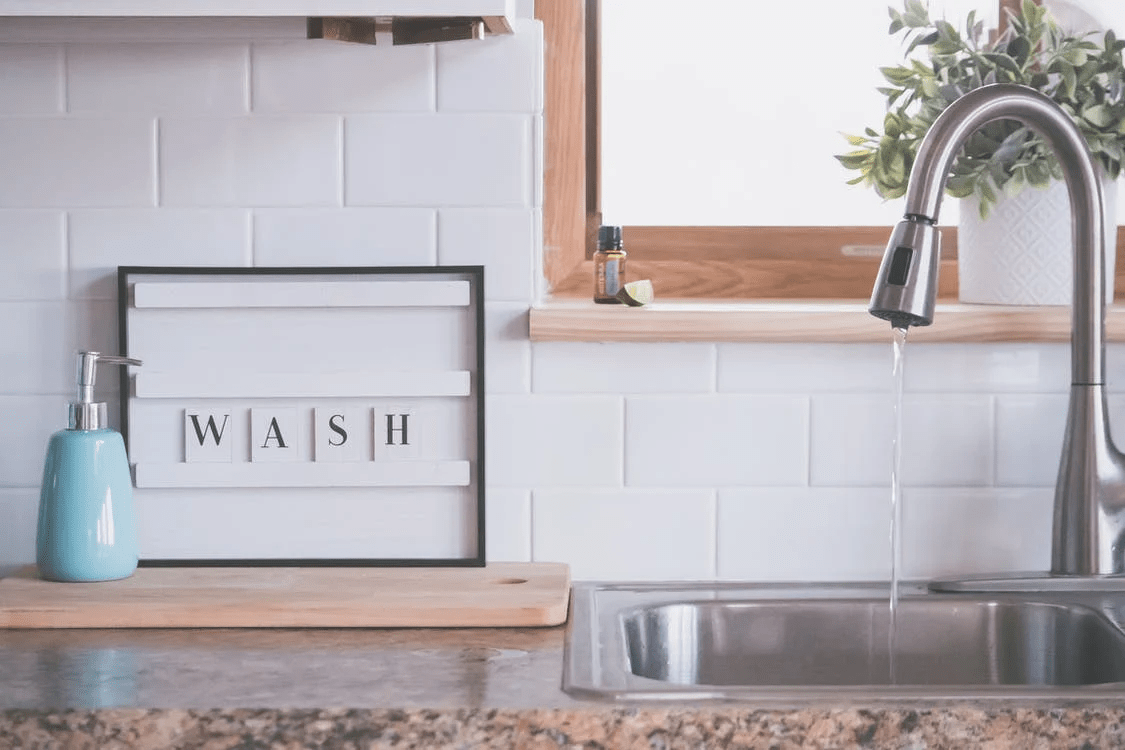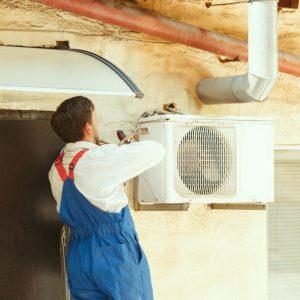Table of Contents
It’s scary to think that the air we breathe and the water we drink might be making us sick, but it’s a reality. Diminished home air and water quality could be impacting our long-term health and longevity. The side effects of these issues are often subtle and difficult to pinpoint, going unnoticed until it’s too late.
Here are some tips for improving your home air and water quality and things to keep in mind.
Schedule an annual HVAC tune-up
When thinking about HVAC systems, most homeowners focus on heating and air conditioning while overlooking the all-important “V” for ventilation. Furnaces and air conditioners directly impact the air we breathe. By neglecting annual maintenance and tune-ups, homeowners leave their health and wellness to chance.
According to Year Round Heating & Air, an HVAC tune-up appointment is simple, affordable, and effective. During this service call, your heating and cooling specialist will clean out the filters and remove debris to ensure the air blowing into your home is allergen-free. They’ll also address any issues with airflow and humidity control to minimize the risk of mold or chemical leaks.
Flush your water heater
When was the last time you flushed your hot water tank? If the answer is never, you’re well overdue. Homeowners should flush their hot water tanks at least once per year, if not more. This process helps reduce and remove sediment that could impact the water quality and the efficiency of your heater.
Remember to turn off the heater’s power source before starting the flushing process. You can also take an efficient approach by shutting off the heater and using some of the water in the tank for laundry, dishes, etc., before flushing it.
Upgrade to a tankless heater
When it’s time to replace your water heater, consider upgrading to a tankless heater instead. Also known as an on-demand water heater, this device is considered more eco-friendly, cost-friendly, and efficient. As the water is continuously running through pipes in the system rather than sitting, you’ll also get less sediment and build-up.
Tankless water heaters are becoming more popular in home remodeling projects and add resale value to your house.
Clean your vents and ducts
Take the time to clean your vents and ducts as you vacuum and sweep your house. Wipe around the edges of vents with a damp cloth, using a vacuum to remove any debris. It’s also worth getting a longer vacuum attachment for this purpose.
If you’re concerned about the air quality in your home or notice excessive amounts of dust building up, consider having your vents and ducts professionally cleaned. However, it’s important to ensure there isn’t another issue with your HVAC system before investing in this service.
Dust once per week
Don’t forget about the long-lost art of dusting as you clean your house. Ideally, you’ll dust weekly to remove dirt and allergens from surfaces in your home. Dusting doesn’t need to be a time-consuming chore— using a static cloth followed by a damp cloth is often sufficient.
This practice is especially important if anyone in your home has allergies or you have a lot of books and paperwork.
Replace outdated pipes
Another negative factor that could be impacting your water quality is outdated pipes. If you live in an older home, you could have lead pipes impacting your water. These can become especially dangerous as they degrade.
Replace all of your outdated pipes and plumbing parts with lead-free alternatives. This upgrade is a must if you’re planning on selling your home, as buyers will come back to negotiate this project.
Install a water softener
If you have hard water, installing a water softener will help protect your pipes, laundry, dishes, and hair. Hard water has an excess of minerals that create limescale in your pipes, creating blockages and degradation. It will also leave rust marks on your clean laundry, toilets, tubs, and sinks.
A water softener is a must if you have hard water. If you’re moving into a new home, be sure to have the water tested and ensure a softener is in place.
Wash and steam clean fabrics
The fabrics in your home are breeding grounds for allergens. While rugs and carpets tend to get vacuumed, curtains, throw pillows, mattresses, and couches are often overlooked.
Set a reminder to wash your curtains every season— more often if you live in a dry area. Consider renting a steam cleaner at least once per year to deep clean your mattresses and cushions.
Use chemical-free cleaners
Some of the products we use to make our homes safe and clean do more harm than good. Rather than relying on chemical-laden cleaning products that emit vapors into the air, choose a natural alternative. You can purchase premade natural cleaning supplies or take a DIY approach with hot water, vinegar, citrus, baking soda, and essential oils.
Filter drinking water again
If you live on a treated water system or have a UV light in place, you likely feel comfortable drinking your tap water. However, there’s no such thing as being too cautious. Consider filtering your drinking water again with a filter tap attachment or filtered pitcher in your fridge. This practice will act as a failsafe if something goes wrong and ensure you’re getting the best possible drinking water.
Insulate and seal the attic
Insulating and sealing the attic is a must for protecting your roof deck and keeping your home energy-efficient. However, it also directly impacts your air quality.
Ensure there’s enough insulation to keep your attic climate controlled and minimize moisture. Check your attic frequently for water leaks and mold. If your bathroom fans vent directly into the attic, work with an HVAC specialist to re-route them elsewhere.
Final words
Maintaining the home and water quality in your home is essential for long-term health and wellness. Use these practical tips to protect your household.




